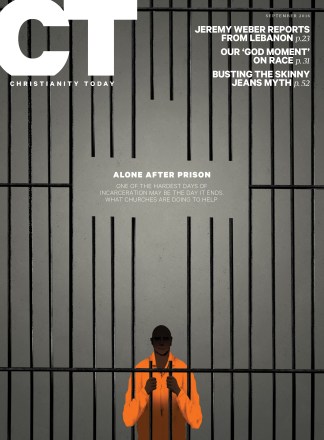Elegant and enormous, Douglas Memorial United Methodist Church dominates fashionable H Street in Washington, DC. The building appears busy: Families come and go for preschool, and two services are held on Sundays.
But the banner out front hints at a complicated truth: “Two Churches, One Mission.” The Romanesque-style church, home to a robust black congregation for more than half a century, has faced steep membership declines in recent years.
In an effort to survive, the church has joined forces with a new one composed largely of young white residents—which already outstrips their group in size.
The changes at Douglas Memorial echo those happening all over the capital, and in many pockets of the country. Cities are transforming as young, educated whites flock to urban areas, including low-income neighborhoods.
At the same time, in a trend some are calling “black flight,” African Americans are leaving cities in record numbers. Middle-class black families are cashing in on skyrocketing property values; others are renters forced to seek lower housing prices outside city limits.
According to a 2015 analysis by Governing magazine, over half of DC’s eligible census tracts have gentrified since 2000. Over the same period, the city’s black population dropped from 60 percent to less than 50 percent, while its white population rose from 30 percent to more than 40 percent.
In some cases, blacks leaving for the suburbs will drive back to the city for church on Sundays. Parking spaces are increasingly scarce, leading to a recent clash between the churches and their new neighbors. When the city proposed a bike lane that would’ve reduced parking near several large black churches, supporters on either side came out in the hundreds.
The churches’ dilemma is an old one, but flipped on its head. In the 1950s and ’60s, many white pastors in DC and elsewhere were facing the same problem.
“If you go back to white flight, you find exactly the same thing happening,” said John Betancur, a professor of urban planning at the University of Illinois at Chicago. “Members of these churches left in droves, and the buildings were left behind. Some were able to transition to the new residents; some didn’t.”
Black churches are finding ways to stay in the city, both by reaching out to new neighbors and by working with developers to make themselves more attractive.
When Helen Fleming arrived at Douglas Memorial in 2005, only 19 people were left. She knew rebuilding the congregation would be tough. “There aren’t many African Americans to draw from here,” she said. The once-working-class area has turned hip and majority-white, and blacks who live nearby already belong to churches.
Then a young man emailed her about renting space for a church he was planning for the city’s rootless workers. Today, the Table Church draws 140 young, mostly white worshipers to its Sunday evening service in Douglas Memorial’s sanctuary.
Douglas Memorial and the Table share ministries and services. They hold a twice-monthly food bank and celebrate Ash Wednesday and Good Friday together.
Fleming enthusiastically preaches the benefits of church partnerships, and recently wrote the Developing Community Partnership Handbook. But she admits that it hasn’t been easy.
Several other African American churches in DC’s Shaw neighborhood are wrestling with how to incorporate white neighbors into their congregations.
“It’s a challenge because of [our] existing identity as an African American church,” said C. Que Hickerson, pastor of Springfield Baptist Church. More than 75 years ago, a white congregation sold its building to the Southern Baptist congregation rather than welcome a new population, “so this is sort of a repeating of the cycle of history.”
The congregation has elected to change rather than move. For starters, they’ve softened their stance on the proposed bike lane, even though the church would be directly affected by it. “This doesn’t necessarily have to be something we oppose,” he said. “We can minister to the residents of Shaw rather than just commuters.”
Earl Trent, senior pastor of the historically black Florida Avenue Baptist Church five blocks away, has taken a similar approach to the city’s new residents, inviting them to block parties and concerts. “For those events, we’ve gotten good responses,” he said. “But for normal worship, we haven’t.” The difference may be the “degree of comfort,” he said. “It has to be intentional—it’s not just going to happen.”
Set in the rapidly gentrifying Petworth neighborhood, 144-year-old Rock Creek Baptist Church is open to staying but needs more space, said pastor Jeffrey Mitchell. The Southern Baptist congregation would be happy to partner with a developer to take better advantage of its lot. But although he’s had a few offers, “they weren’t advantageous to the church.”
Riverside Baptist Church did find a good offer, and will soon demolish its dark, dated Modernist building in southwest DC. A developer will build residential units and an architecturally distinct church. Finally, a large portion of the proceeds will be deposited in an endowment. “I saw the changes coming,” said pastor Michael Bledsoe. “And I saw a window of opportunity to secure the church.”
Fleming believes that mixing people is God’s work—as well as the future for urban black churches. “The future won’t look like the past. It can’t,” she said. “Isolation is over.”










